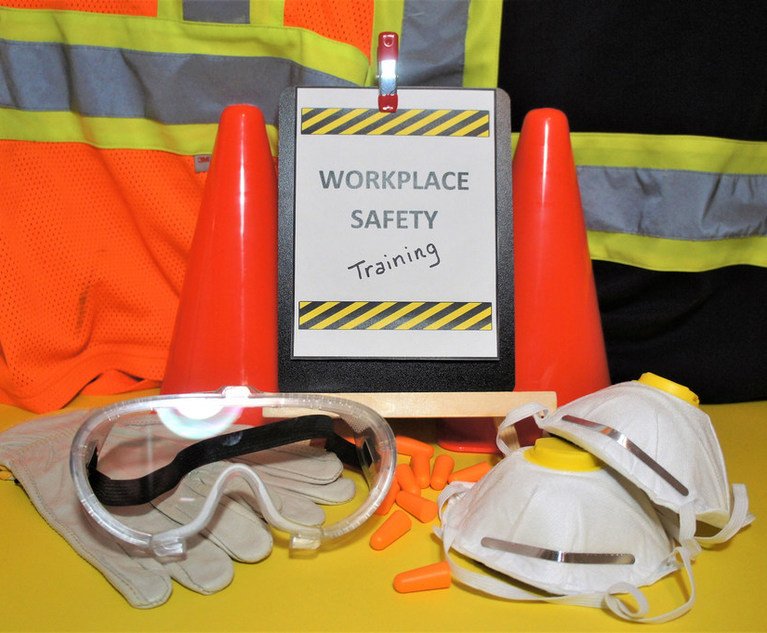How predictive analytics enhance workers' comp risk management
Today's powerful predictive analytics tools can improve safety outcomes and reduce claims.

In the realm of workers’ compensation risk management, staying ahead of potential hazards and ensuring employee safety is of paramount importance.
Traditional approaches have relied on reactive measures to address workplace injuries, resulting in costly claims and compromised well-being. However, with the advent of predictive analytics, organizations now have a powerful tool at their disposal to proactively manage risks, identify potential areas of concern, and foster a culture of prevention.
This article explores how harnessing the power of predictive analytics can revolutionize workers’ compensation risk management, leading to improved safety outcomes and reduced claims.
Identifying high-risk areas
Targeted analytics allows businesses to harness the wealth of data available to them and gain insights into injury patterns, workplace conditions and employee behaviors. By analyzing historical data, organizations can identify high-risk areas and activities that are more likely to result in accidents or injuries.
This knowledge empowers companies to take targeted preventive actions, such as implementing additional safety protocols, providing specialized training, or modifying equipment and processes. By proactively addressing these high-risk areas, businesses can significantly reduce the occurrence of injuries and subsequent workers’ compensation claims.
Anticipating injury trends
With the power of targeted analytics, organizations can move beyond reactive risk management and enter the realm of anticipation. By analyzing historical data and identifying patterns and correlations, predictive models can forecast potential injury trends.
These insights allow businesses to implement preventive measures before accidents occur, saving both human and financial costs. For example, if data reveals a correlation between certain workplace conditions and specific types of injuries, companies can modify those conditions or implement preventive measures to mitigate the risks.
Implementing proactive measures
One of the greatest benefits of predictive and targeted analytics in workers’ compensation risk management is the ability to implement proactive measures. Instead of waiting for an accident to happen and dealing with its aftermath, organizations can use predictive models to identify potential hazards and take preventive actions in advance.
This could include strengthening safety training programs, conducting regular safety audits, or providing employees with personal protective equipment tailored to their specific roles. By being proactive, businesses can create a safer work environment, reduce the likelihood of accidents, and protect their most valuable asset — their employees.
Optimizing resource allocation
Predictive analytics also plays a crucial role in optimizing resource allocation within an organization. By identifying high-risk areas, companies can allocate their resources — financial, human and technological — where they are most needed.
For instance, if data analysis suggests that a particular department or shift has a higher incidence of injuries, management can allocate additional safety personnel, equipment or training resources to that specific area. By targeting resources efficiently, businesses can maximize their impact on risk reduction, ultimately leading to significant cost savings and improved safety outcomes.
Overall, predictive analytics has emerged as a game-changer in the field of workers’ compensation risk management. By leveraging data-driven insights, organizations can identify high-risk areas, anticipate injury trends, and implement proactive measures to mitigate risks and enhance workplace safety. Through this approach, businesses can make informed decisions, optimize resource allocation, and foster a culture of prevention.
By reducing the number of workers’ compensation claims and promoting a safer work environment, organizations can protect their employees, boost productivity, and ultimately contribute to their long-term success. Embracing the power of targeted analytics is no longer a choice, but a necessity for organizations looking to stay ahead in the evolving landscape of workplace safety and risk management.
Kirk Aguilera (kirk.aguilera@libertycompany.com) is managing partner and national Complex Workers’ Compensation Practice leader at The Liberty Company Insurance Brokers. Nick Hoover (nick.hoover@libertycompany.com) is vice president of Workers’ Compensation Claims at The Liberty Company Insurance Brokers. And Josh Mozer (Josh.Mozer@libertycompany.com) is director of Workers’ Compensation Claims for The Liberty Company Insurance Brokers.
See also:
- California’s workers’ comp benchmark rate lowered
- Side effects may vary: Medical marijuana’s unintended benefits to workers’ comp
- Two cases illustrate how workers’ comp plays out in professional sports
Want even more of the latest workers’ comp news and insights delivered directly to your inbox? Sign up for the PropertyCasualty360.com Workers’ Comp Watch newsletter, delivered twice monthly.

